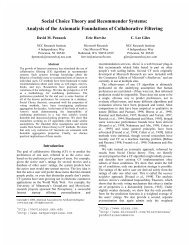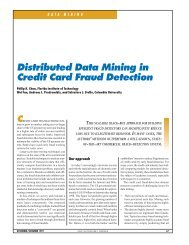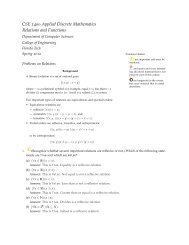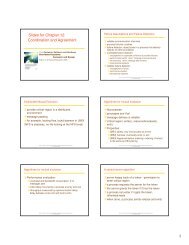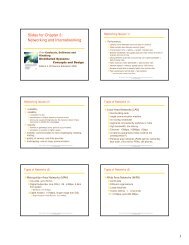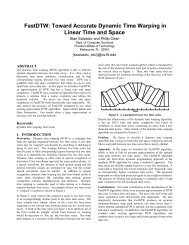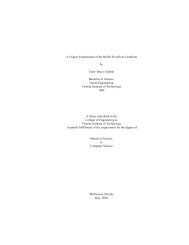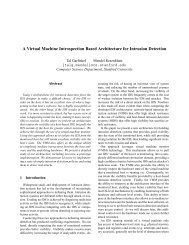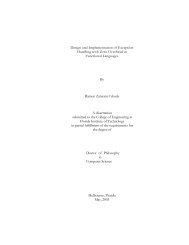Integration of Topological Constraints in Medical ... - Florent Ségonne
Integration of Topological Constraints in Medical ... - Florent Ségonne
Integration of Topological Constraints in Medical ... - Florent Ségonne
You also want an ePaper? Increase the reach of your titles
YUMPU automatically turns print PDFs into web optimized ePapers that Google loves.
6 F. Ségonne and B. Fischl<br />
stance, the presence <strong>of</strong> a handle <strong>in</strong> an object could be corrected by either<br />
cutt<strong>in</strong>g the handle <strong>in</strong> the foreground object, or cutt<strong>in</strong>g the correspond<strong>in</strong>g<br />
handle <strong>in</strong> the background object. Cutt<strong>in</strong>g the background handle can be<br />
<strong>in</strong>terpreted as fill<strong>in</strong>g the correspond<strong>in</strong>g foreground hole (Fig. 4-b,c).<br />
2.2 Topology and Discrete Imag<strong>in</strong>g<br />
In order to apply topological concepts to a discrete framework and def<strong>in</strong>e<br />
the topology type (i.e. homotopy type) <strong>of</strong> digital segmentations, the notion<br />
<strong>of</strong> cont<strong>in</strong>uity must be adapted to discrete spaces and objects, such as 3D<br />
image grids and triangulations. This is obta<strong>in</strong>ed by replac<strong>in</strong>g the notion <strong>of</strong><br />
cont<strong>in</strong>uity with the weaker notion <strong>of</strong> connectivity. We describe how topological<br />
notions can be adapted to the two most common data structures<br />
used <strong>in</strong> medical imag<strong>in</strong>g: 3D data structures and surfaces.<br />
A - Digital Topology<br />
Digital topology provides an elegant framework, which translates the cont<strong>in</strong>uous<br />
concepts <strong>of</strong> topology to discrete images. In this theory, b<strong>in</strong>ary images<br />
<strong>in</strong>herit a precise topological mean<strong>in</strong>g. In particular, the concept <strong>of</strong><br />
homotopic deformation, which is required to assign a topological type to<br />
a digital object, is clearly def<strong>in</strong>ed through the notion <strong>of</strong> simple po<strong>in</strong>t. An<br />
extensive discussion <strong>of</strong> these concepts can be found <strong>in</strong> [36]. In this section,<br />
some basic notions <strong>of</strong> digital topology are presented. All def<strong>in</strong>itions are<br />
from the work <strong>of</strong> G. Bertrand, which we refer to for more details [7].<br />
FIGURE 4. a) 6-, 18- and 26-connectivity. b) The circled voxel is a non-simple<br />
po<strong>in</strong>t c) Several dual topological corrections are possible: either cutt<strong>in</strong>g the handle<br />
(top) or fill<strong>in</strong>g the hole (bottom).<br />
In the digital topology framework, a 3D image I is <strong>in</strong>terpreted as a<br />
graph. The vertices <strong>of</strong> the graph are the digital po<strong>in</strong>ts (i.e. the voxels) and<br />
the edges are def<strong>in</strong>ed through neighborhood relations between po<strong>in</strong>ts (i.e.<br />
the connectivity). A 3D b<strong>in</strong>ary digital image I is composed <strong>of</strong> a foreground<br />
object X and its <strong>in</strong>verse, the complement X. We first need to def<strong>in</strong>e the<br />
concept <strong>of</strong> connectivity, which specifies the condition <strong>of</strong> adjacency that two<br />
po<strong>in</strong>ts must fulfill to be regarded as connected. Three types <strong>of</strong> connectivity<br />
are commonly used <strong>in</strong> 3D: 6-, 18- and 26-connectivity. Two voxels are 6-<br />
adjacent if they share a face, 18-adjacent if they share at least an edge and<br />
26-adjacent if they share at least a corner (Fig. 4-a). In order to avoid topological<br />
paradoxes, different connectivities, n and n, must be used for one


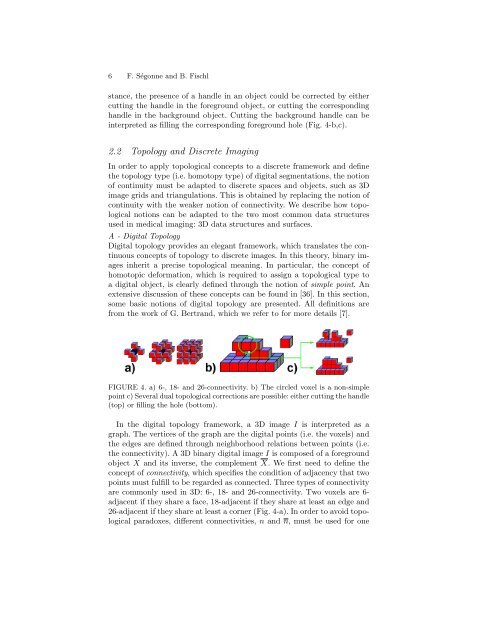
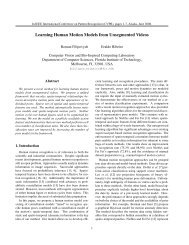
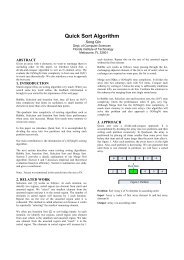
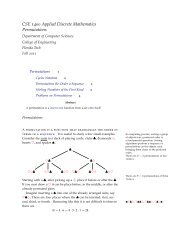
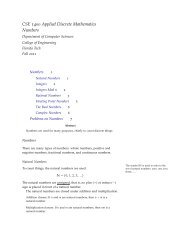
![{ public static void main (String[] args) { System.out.println (](https://img.yumpu.com/49719541/1/190x143/-public-static-void-main-string-args-systemoutprintln-hello-.jpg?quality=85)
